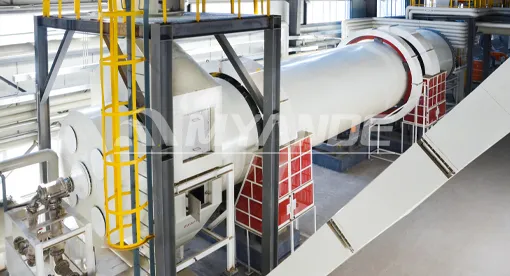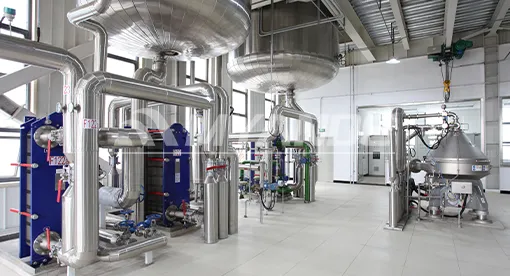
What is the Process of Extracting Cotton Seed Oil?
Sep 10, 2025
When I first started working with edible oil processing projects, one of the most common questions clients asked me was: “How exactly do we extract cottonseed oil and make it safe for consumption?” Cottonseed oil, though widely used in food and industrial applications, is not straightforward to process because the raw seed contains fiber, hull, and natural toxins that must be carefully removed.
The process of extracting cottonseed oil involves preparing the seeds through cleaning, dehulling, and flaking, cooking them to loosen the oil, and then using mechanical pressing or solvent extraction to separate crude oil, which is further refined through degumming, neutralization, bleaching, and deodorization into safe edible oil.

In this article, I’ll walk you through every major step of cottonseed oil extraction and explain why it matters. I’ll also discuss whether cottonseed oil is healthy, and how cottonseed as a byproduct of the textile industry contributes to global protein needs. My goal is to give you practical, expert insight so you can evaluate this industry with confidence.
How is Cottonseed Oil Extracted?
When we look at cottonseed oil production, it’s important to recognize that cottonseeds are not naturally ready for oil extraction. They require a series of preparation and refining steps before they can become a clean, high-quality edible oil.
1. Preparation of Cottonseeds
Before any oil is extracted, seeds must be properly prepared. This preparation stage ensures high yield and prevents contamination in the final oil.
Key preparation steps include:
|
Step |
Description |
Purpose |
|
Delinting |
Removing short fibers attached to seeds |
Prevents clogging in equipment |
|
Cleaning |
Removing stones, dust, and plant debris |
Ensures smooth downstream processing |
|
Dehulling |
Removing hard outer hulls |
Exposes kernels for oil recovery |
|
Separation |
Dividing kernels and hulls |
Kernels go for oil, hulls for feed/fuel |
|
Flaking |
Flattening kernels into thin pieces |
Increases surface area for cooking |
This stage transforms raw seeds into a manageable raw material, ready for oil release.

2. Cooking the Flakes
In cottonseed processing, cooking is not about flavor, but efficiency. Once kernels are flaked, they are treated with steam to adjust both moisture and temperature.
● Moisture helps soften the cellular structure.
● Heat loosens oil molecules and denatures unwanted proteins.
● Proper cooking increases the oil yield in subsequent pressing.
If you skip or underperform this stage, the extraction efficiency can drop dramatically, leaving valuable oil in the meal.

3. Oil Extraction
Now comes the actual oil recovery stage. In my years of experience, I have seen two main techniques applied:
Mechanical Pressing (Expelling): Cooked flakes are fed into screw presses or hydraulic presses. The intense pressure squeezes out oil, leaving behind a press cake.
Solvent Extraction: To maximize yield, the press cake is treated with a solvent—typically food-grade hexane—that dissolves remaining oil. This mixture (miscella) is later separated from the solid meal.
4. Solvent Recovery
Because hexane is used in solvent extraction, it must be carefully recovered for both safety and sustainability.
● Solvent is evaporated from miscella (oil + hexane).
● The separated hexane vapor is condensed and reused.
● Solid meal is also desolventized to make it safe as an animal feed byproduct.
This closed-loop system reduces waste and lowers production costs.
5. Refining the Crude Oil
The crude cottonseed oil extracted in earlier steps still contains impurities like gossypol, phospholipids, free fatty acids, pigments, and odors. Refining is essential.
Main refining steps:
● Degumming – Removes phospholipids and mucilage.
● Neutralization – Alkali refining to remove free fatty acids.
● Bleaching – Uses activated clay to remove pigments and residual impurities.
● Deodorization – High-temperature steam distillation under vacuum removes odors.
● Winterization – Eliminates waxes that cause cloudiness at low temperatures.

Only after these steps does cottonseed oil meet the quality standards for food use, with a neutral taste, clear appearance, and extended shelf life.
Is Cottonseed Oil Healthy or Unhealthy?
Health is always one of the first concerns my clients raise, especially when evaluating oils for human consumption. The truth lies in balance: cottonseed oil has both positive attributes and points of caution.
Cottonseed oil contains vitamin E, polyunsaturated fats (especially omega-6 linoleic acid), and monounsaturated fats (oleic acid). These nutrients provide cardiovascular, immune, and skin health benefits, but excessive consumption of omega-6 relative to omega-3 can create imbalance in the diet.
Benefits of Cottonseed Oil
● Immune Support: Vitamin E and antioxidants help reduce inflammation and support immunity.
● Cholesterol Management: Can lower LDL cholesterol and improve HDL cholesterol levels.
● Cancer Prevention Potential: Antioxidants reduce oxidative stress, lowering cancer risks.
● Skin & Hair Health: Vitamin E and fatty acids nourish skin, aid wound healing, and strengthen hair.
Risks or Considerations
● High Omega-6 Content: Needs to be balanced with omega-3 fatty acids (e.g., fish oil, flaxseed oil).
● Refining Dependence: Only refined oil is safe. Crude cottonseed oil contains gossypol, toxic if not removed.
● Moderation is Key: Like all vegetable oils, excessive intake leads to excess calories and health risks.
Is Cottonseed a Sustainable Contributor to Global Protein Requirements?
From an engineering perspective, cottonseed is fascinating—not only as an oil source but also as a protein resource. After oil extraction, the remaining cottonseed meal is rich in protein.
Globally, cottonseed produces about 10 million metric tons of protein annually, enough to meet the protein needs of more than 500 million people.
Why Cottonseed Protein Matters
● Balanced Amino Acids: Cottonseed meal has a strong amino acid profile.
● Versatile Applications: Can be processed into protein flour, concentrate, or isolate.
● Animal Feed and Human Potential: Currently used widely in livestock feed; advanced processing reduces gossypol to make it suitable for human food too.
Sustainability Advantages
Cottonseed is a byproduct of cotton fiber production. No extra land, water, or fertilizer is required to grow it. Using cottonseed for oil and protein ensures full utilization of agricultural resources, minimizing waste.
● Environmental Benefit: Adds value to cotton farming without additional ecological footprint.
● Food Security Contribution: Especially promising for malnutrition-challenged regions in Asia and Africa.
● Innovation Potential: Genetically engineered ultra-low gossypol cotton offers safer human food options.
Conclusion
In my two decades of experience in edible oil processing, I have seen how cottonseed oil projects require careful planning, high-quality equipment, and precise engineering to succeed. The extraction process may look complex, but each stage plays a critical role in ensuring safe, efficient, and profitable production.
Cottonseed oil itself can be a healthy choice when consumed in moderation, thanks to its vitamin E and heart-friendly fats. Beyond oil, cottonseed also contributes to global protein sustainability, making it not just an industrial byproduct but a valuable resource for the future.
If you’re considering investing in a cottonseed oil extraction project, my advice is simple: work with experienced engineering partners who can provide complete turnkey solutions, from process design to commissioning and training. That’s how you ensure your plant delivers both high-quality oil and strong returns for years to come.
拷贝.webp)


